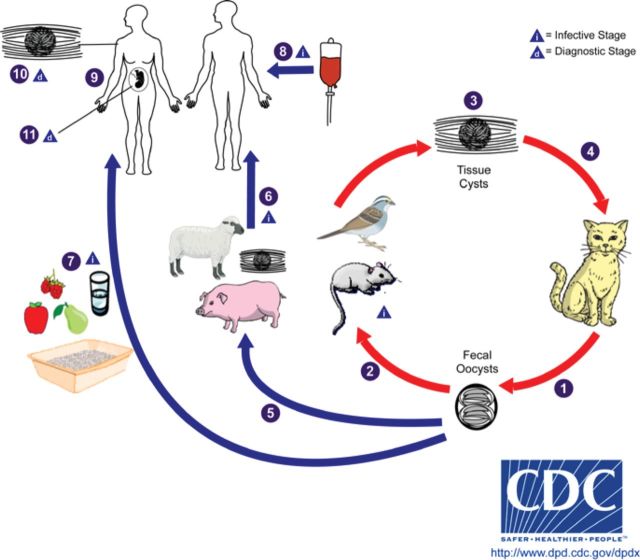Figure 1.
Lifecyle of Toxoplasma gondii.
- (1) Unsporulated oocysts are shed in the cat's feces, although oocysts are usually only shed for 1–2 weeks, large numbers may be shed.
- (2) Intermediate hosts in nature (including birds and rodents) become infected after ingesting soil, water, or plant material contaminated with oocysts.
- (3) Oocysts transform into tachyzoites that localize in neural and muscle tissue and develop into tissue cyst bradyzoites.
- (4) Cats become infected after consuming intermediate hosts harboring tissue cysts or by ingestion of sporulated oocysts.
- (5) Animals bred for human consumption and wild game may also become infected with tissue cysts after ingestion of sporulated oocysts in the environment.
- Humans can become infected by any of several routes:
- • eating undercooked meat of animals harboring tissue cysts (6)
- • consuming food or water contaminated with cat feces or by contaminated environmental samples (such as fecal-contaminated soil or changing the litter box of a pet cat) (7)
- • blood transfusion or organ transplantation (8)
- • transplacentally from mother to fetus (9)
- (10) Diagnosis is usually achieved by serology, although tissue cysts may be observed in stained biopsy specimens.
- (11) Diagnosis of congenital infections can be achieved by detecting T gondii DNA in amniotic fluid using molecular methods such as polymerase chain reaction.

